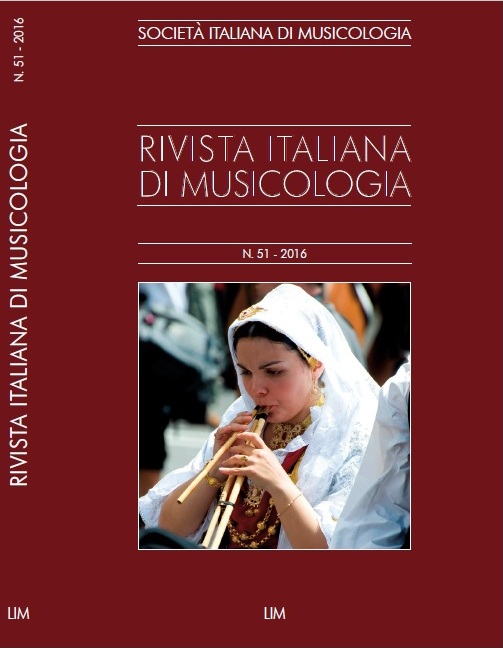Un testamento in forma di mosaico: note di poetica e drammaturgia musicale a Die Liebe der Danae
Abstract
For a rather long time, Richard Strauss’s penultimate opera Die Liebe der Danae has been regarded by both scholars and critics – as well as by Strauss himself – as the composer’s intellectual testament, if not his ultimate outcome.
This article aims at analysing and enlightening the dense network of musical and intellectual suggestions permeating Die Liebe der Danae in order to cast new light not only on Strauss’s models (especially the marked Wagnerian patterns in Acts II and III) but also on his compositional practice. As a result, it becomes clear that Strauss’s unceasing attempts to structurally reshape the libretto aimed at creating a strongly allusive dramaturgy – often underlined by a skilful use of musical quotation – whereby the Wagnerian Vorlage (namely, the three acts of The Walkyrie) was deliberately deprived of its original meanings, detourned and re-used as a starting point for completely different – yet very Straussian, indeed – artistic ad ideological purposes. In this very sense, Die Liebe der Danae can be regarded as Strauss’s ultimate attempt at both intellectually and musically «rounding Wagner’s mountain».


